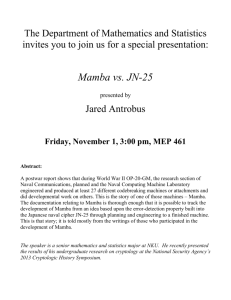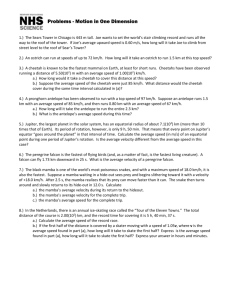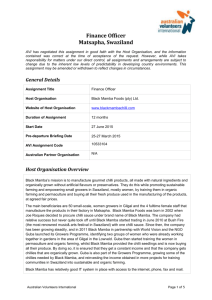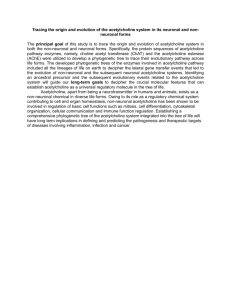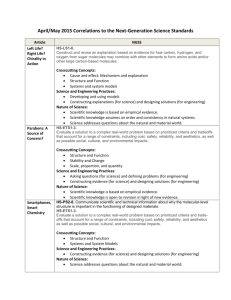Exploring venoms and toxins
advertisement
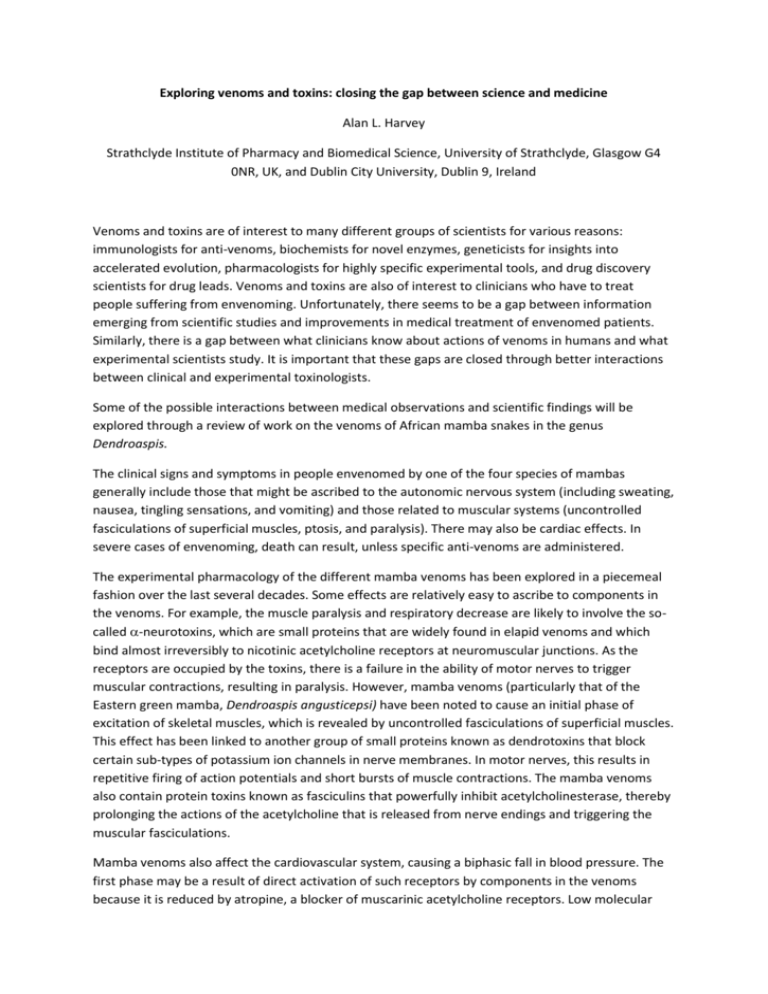
Exploring venoms and toxins: closing the gap between science and medicine Alan L. Harvey Strathclyde Institute of Pharmacy and Biomedical Science, University of Strathclyde, Glasgow G4 0NR, UK, and Dublin City University, Dublin 9, Ireland Venoms and toxins are of interest to many different groups of scientists for various reasons: immunologists for anti-venoms, biochemists for novel enzymes, geneticists for insights into accelerated evolution, pharmacologists for highly specific experimental tools, and drug discovery scientists for drug leads. Venoms and toxins are also of interest to clinicians who have to treat people suffering from envenoming. Unfortunately, there seems to be a gap between information emerging from scientific studies and improvements in medical treatment of envenomed patients. Similarly, there is a gap between what clinicians know about actions of venoms in humans and what experimental scientists study. It is important that these gaps are closed through better interactions between clinical and experimental toxinologists. Some of the possible interactions between medical observations and scientific findings will be explored through a review of work on the venoms of African mamba snakes in the genus Dendroaspis. The clinical signs and symptoms in people envenomed by one of the four species of mambas generally include those that might be ascribed to the autonomic nervous system (including sweating, nausea, tingling sensations, and vomiting) and those related to muscular systems (uncontrolled fasciculations of superficial muscles, ptosis, and paralysis). There may also be cardiac effects. In severe cases of envenoming, death can result, unless specific anti-venoms are administered. The experimental pharmacology of the different mamba venoms has been explored in a piecemeal fashion over the last several decades. Some effects are relatively easy to ascribe to components in the venoms. For example, the muscle paralysis and respiratory decrease are likely to involve the socalled -neurotoxins, which are small proteins that are widely found in elapid venoms and which bind almost irreversibly to nicotinic acetylcholine receptors at neuromuscular junctions. As the receptors are occupied by the toxins, there is a failure in the ability of motor nerves to trigger muscular contractions, resulting in paralysis. However, mamba venoms (particularly that of the Eastern green mamba, Dendroaspis angusticepsi) have been noted to cause an initial phase of excitation of skeletal muscles, which is revealed by uncontrolled fasciculations of superficial muscles. This effect has been linked to another group of small proteins known as dendrotoxins that block certain sub-types of potassium ion channels in nerve membranes. In motor nerves, this results in repetitive firing of action potentials and short bursts of muscle contractions. The mamba venoms also contain protein toxins known as fasciculins that powerfully inhibit acetylcholinesterase, thereby prolonging the actions of the acetylcholine that is released from nerve endings and triggering the muscular fasciculations. Mamba venoms also affect the cardiovascular system, causing a biphasic fall in blood pressure. The first phase may be a result of direct activation of such receptors by components in the venoms because it is reduced by atropine, a blocker of muscarinic acetylcholine receptors. Low molecular weight compounds, including acetylcholine itself, have been suggested to be responsible, but there are also some small proteins in the same structural family as the -neurotoxins that activate muscarinic receptors. The second hypotensive phase is not blocked by atropine and, hence, must be unrelated to neural control of blood pressure. Two groups of protein toxins, calciseptines and calcicludines, have been found in mamba venoms and these have direct blocking actions on calcium ion channels in vascular smooth muscle. Such an action would be expected to produce an atropineinsensitive fall in blood pressure. A third type of protein, atrial natriuretic-like peptides, is also present, and these also have a direct relaxant effect on vascular smooth muscle. Mamba venoms have also been reported to have anticoagulant effects in human victims. These can be ascribed to the presence of another group of small proteins called mambins that block platelet aggregation. With this background information, it is possible to build up an explanation of why mamba venoms can be lethal: -neurotoxins reduce the safety factor for neuromuscular transmission, dendrotoxins increase acetylcholine release and fasciculins prolong the action of acetylcholine, which would combine to cause a depolarization-induced neuromuscular paralysis. In the cardiovascular system, fasciculins could increase vagal tone and slow the heart, while the cholinomimetics, calcium ion channel blockers and atrial natriuretic-like peptides would dilate blood vessels, potentially causing a cardiovascular collapse. However, there are still some unanswered questions. The components in the venoms that might induce other symptoms are presently unknown. For example, what causes the sweating, the pain, the sensory disturbances….? More work is clearly needed, prompted by accurate clinical observations. In conclusion, experimental science, when properly applied, can lead to insights into underlying pathophysiological processes that may help clinicians improve therapy. Conversely, details of signs and symptoms from cases of envenoming can set challenges to experimental toxinologists that could lead to novel insights into human physiology.

